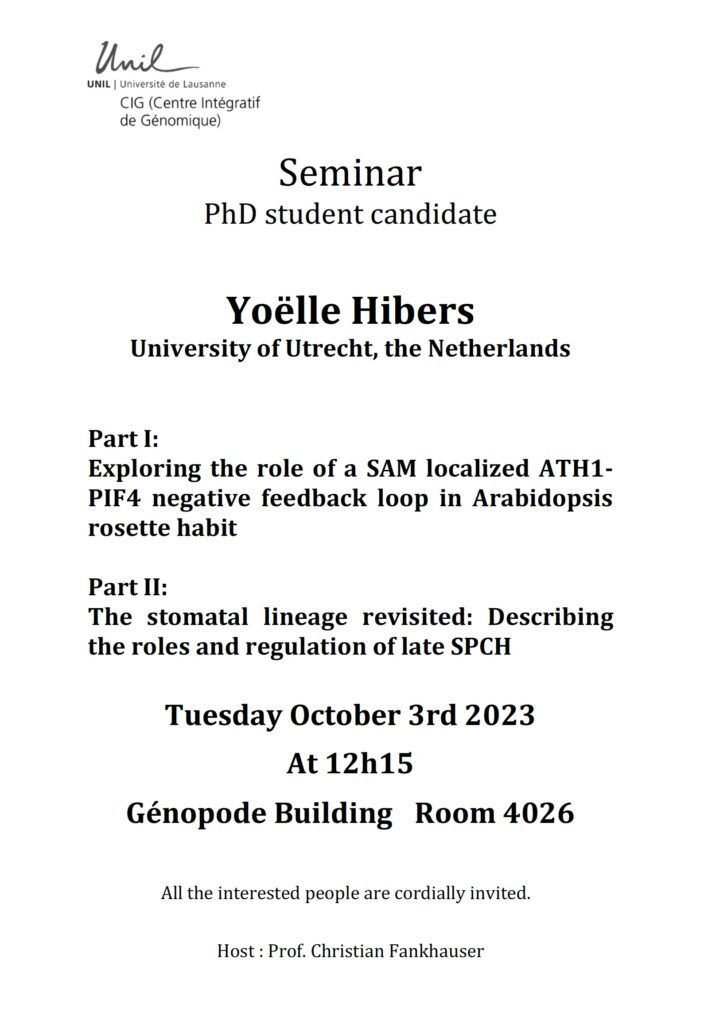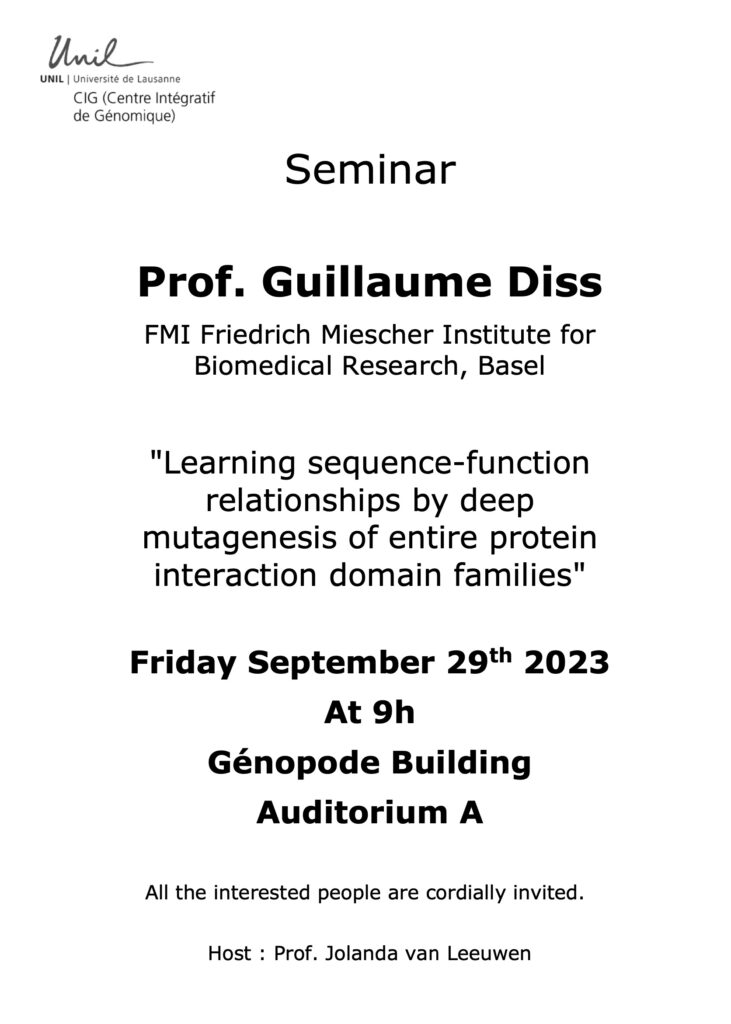Dec. 13 & 14, GENOPODE & AMPHIMAX

December 13
GENOPODE Auditorium A
8:30 Babatunde Ekundayo Accessing DNA in condensed chromatin: Fundamental mechanisms and implications for gene therapy
9:10 Akanksha Jain TBD
AMPHIMAX 414
10:20 Ehsan Habibi Deciphering the Principles of Embryo Development Across Space and Time
11:00 Yoav Voichek Transcriptional Regulation in Plants – Unique Properties and Principles
December 14
GENOPODE Auditorium B
8:00 Ricardo Bocchi Molecular mechanisms underlying astrocyte origins and diversity
8:40 Irene Beusch Exploring functions of spliceosomal proteins through CRISPR-Cas9 base editing screens
9:20 Alessandra Brambati DNA Double-Strand Breaks: Drivers of Disease and Evolution





